60 years of Ernie Ball: the history of a family business that changed the world of guitar and bass as we know it
With the help of Sterling Ball, we unpack the history behind a great American success story

What product is heard on more recordings than anything else over the last 60 years? Many guitarists, musicians or even casual music fans would probably answer something like the Fender Stratocaster, Gibson Les Paul, Martin dreadnought or even the Fender Precision Bass.
Those aren’t bad guesses, but the answer is actually something that all of those choices have in common more often than not: Ernie Ball strings.
The success of Ernie Ball strings in and of itself is a remarkable, noteworthy achievement, but it’s only one facet of the company’s extraordinary history over the last 60 years, starting in 1962 when Ernie Ball first packaged his own branded custom light-gauge Rock N Roll string sets and sold them from his music retail stores in the greater Los Angeles area.
Today, Ernie Ball strings and accessories, as well as the company’s Music Man guitars and basses, are sold in 135 countries; the brands are internationally recognized icons; and their products are embraced by everyone from the world’s best-selling artists to beginners just starting their musical journeys.
“I’m super proud of the company’s 60-year history,” says Ernie Ball/Music Man president Sterling Ball. “We’ve worked with a lot of great people, and a lot of great things happened. It all started with my father. My dad changed an industry. But I’m reluctant to lean on history, because it’s too easy to use the past as a crutch. We’re focused on the present, and we’re thinking about the future.
“With my son Brian now running the company, we’re making new history and continuing to change the industry. One of the main reasons for our success is that we figured out how to serve guitar players. We’ve consistently been determined to deliver what they want and need, and that is always changing and evolving. Everything is about the player.”
Ernie Ball’s dedication to guitarists was inspired by his own experiences as a player at first and later as a music retailer. After returning from service in the United States Air Force during the Korean War, he played pedal steel in various bands around Los Angeles before becoming a member of the house band on KTLA television’s “Western Varieties” program and doing session work.
All the latest guitar news, interviews, lessons, reviews, deals and more, direct to your inbox!
Around this time he met Leo Fender, and the two became good friends, with Ball becoming an early Fender endorsee and product beta tester in 1953. Seeking a more reliable means of making a living, Ball opened a guitar teaching studio in 1954 and his first music retail store in 1957 in Tarzana, California, located in the San Fernando Valley northwest of downtown Los Angeles.
Ball’s store was considered controversial by the traditional-minded music industry during that time because it quite possibly was the very first shop in the U.S. that sold only guitars exclusively, whereas typical music stores of the time also sold brass, woodwind, drums and orchestral instruments as well as pianos and organs. The store struggled at times, but eventually it became successful, and Ball opened additional locations in Canoga Park and Thousand Oaks.
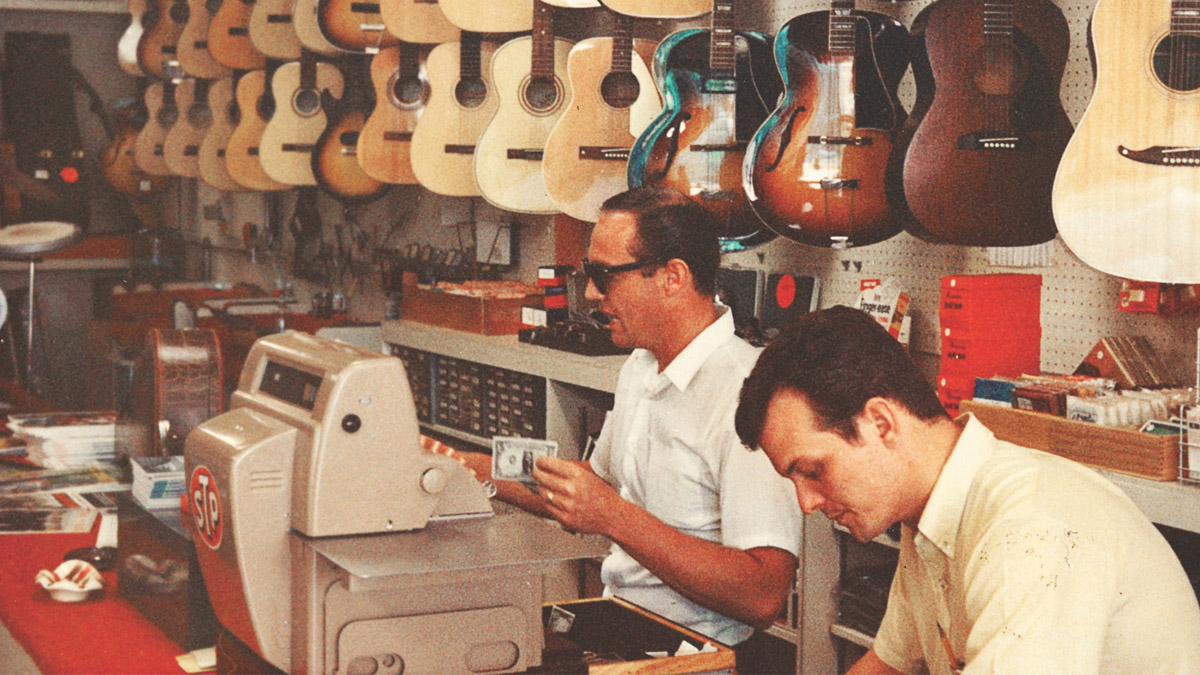
“Guitarists knew my dad’s store was the place to go,” Sterling says. “My dad would set up all of the guitars that he sold. Players would come in from all over Southern California to buy Teles and Strats from us because of that. That’s something we still insist on doing today. We spend at least 45 minutes meticulously setting up every Music Man guitar and bass so it performs at its best before we ship them out, which is a lot more effort than most other companies make.”
My dad would set up all of the guitars that he sold. Players would come in from all over Southern California to buy Teles and Strats from us because of that
Back then, electric guitars were typically shipped from the factory with .012-.052 or .013-.055 strings with a wound G, and replacement string sets were the same gauges or heavier. Ball noticed that many of his young students and customers struggled to bend strings, and he also knew that many pro guitarists were using lighter gauge strings on the recordings that these kids were trying to imitate.
After Fender and Gibson rejected his suggestion of offering light gauge string sets, Ball started setting up the instruments he sold with lighter strings and putting together his own packages of custom light gauge string sets by discarding the low E string, changing the fifth through first strings into the sixth through second strings and using a banjo’s light-gauge high D string for the high E string.
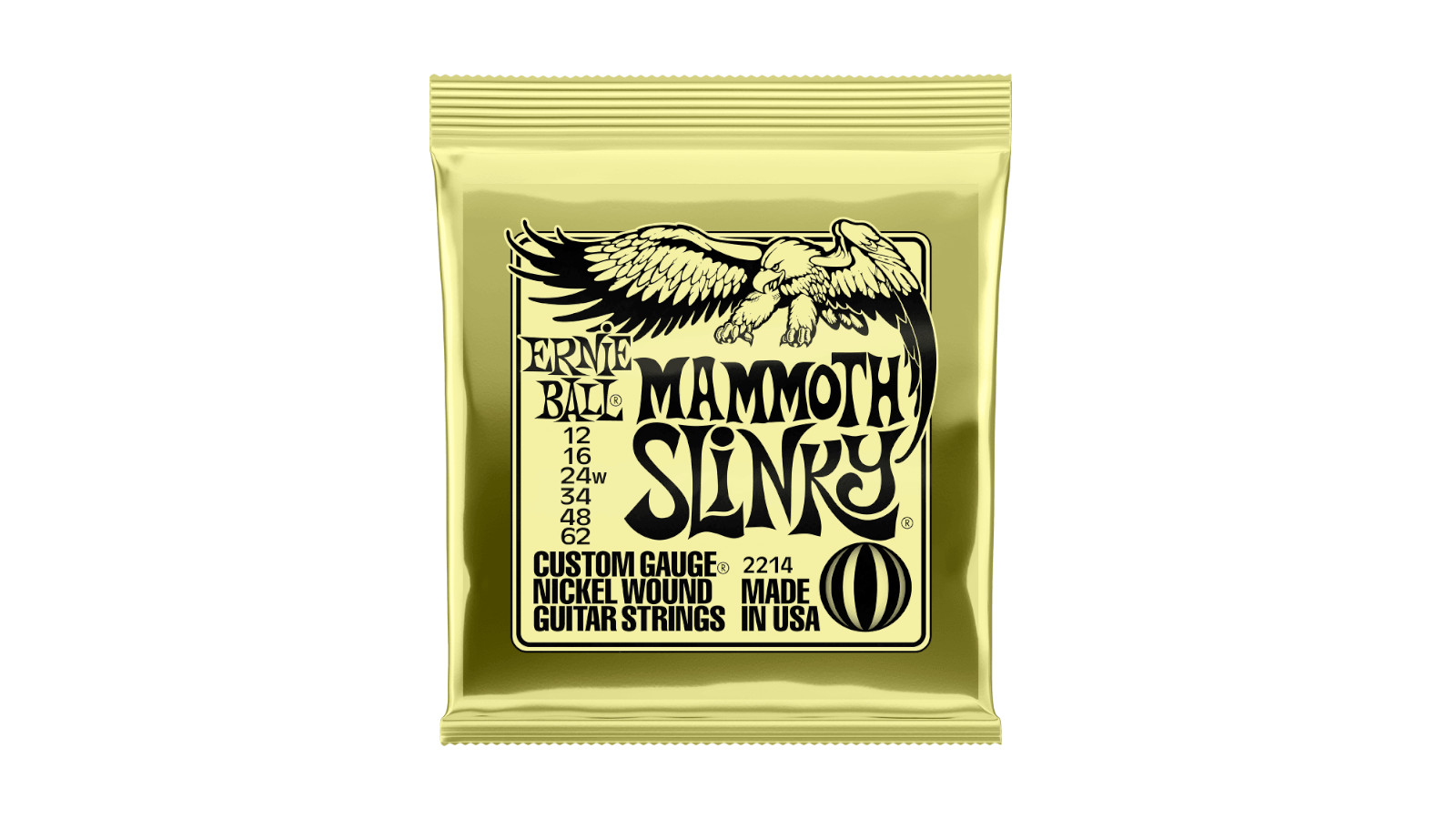
Ball introduced his first Ernie Ball-brand string sets in 1962. The packages featured eye-catching dayglo colors and bold logos and graphics designed by Rolly Crump.
“My dad and Rolly were really good friends since high school,” Sterling says. “Rolly worked for Disney, where he became one of Walt’s top three art directors and designed the It’s a Small World ride. I remember when I was 7, my dad called all of the neighborhood kids down to the store, which was about a block from our home.
“My dad had a stack of string wallet designs that said ‘Rock N Roll’ on them and were in different colors and black and white. He asked the kids to choose the ones they liked. The kids all loved the dayglo colors, so that’s what he went with. That was how he did his market research.”
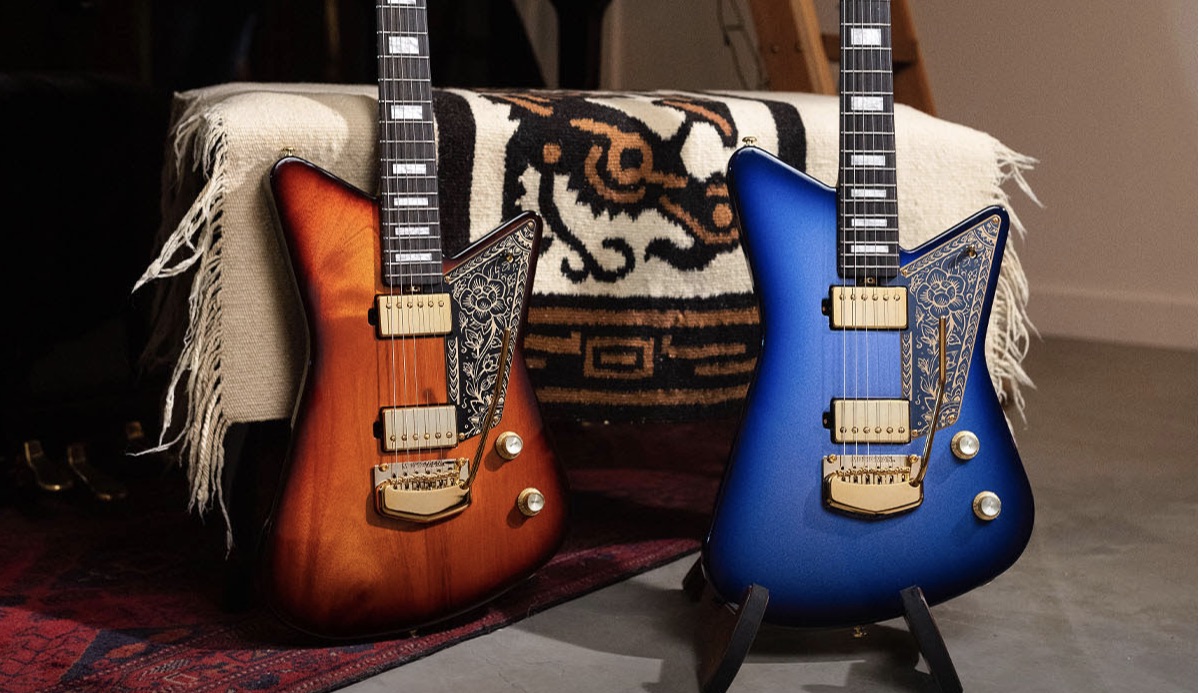
Ernie Ball Rock N Roll string sets were offered in a variety of custom gauges, including skinny top/heavy bottom, rhythm guitar and “slinky”. Word about these strings – particularly the light Slinky sets – spread quickly as touring guitarists showed them to other players, and order requests came in from musicians and retailers across the country.
Eventually the string production business eclipsed the retail stores’ income, and in 1967 Ernie Ball closed his stores and moved to Newport Beach to focus exclusively on making strings and accessories like personalized imprinted guitar picks, cables, straps and more.
Another innovation that revolutionized the string industry was the company’s retailer packs of individual strings that were sold separately, enabling guitarists to put together their own custom sets.
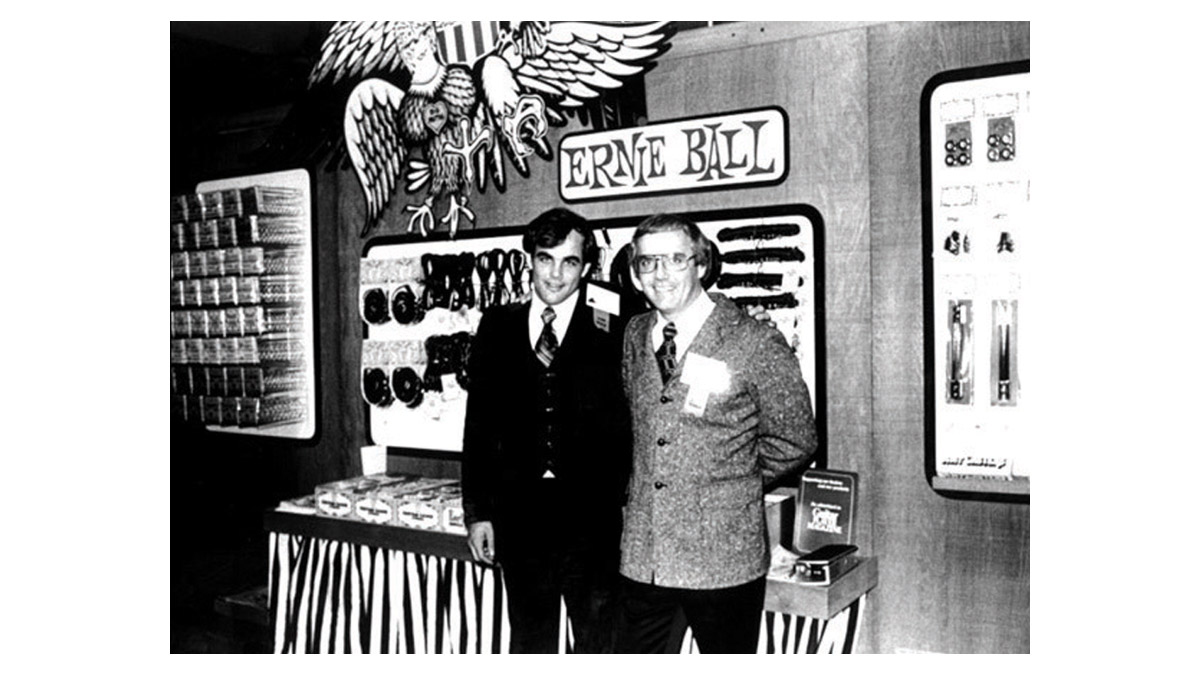
The almost instant impact that Ernie Ball strings had on the sound of music recordings featuring the electric guitar cannot be overstated.
In California during the early ’60s the company’s Slinky strings played a major role in the surf guitar phenomenon (the Ventures were among the store’s customers) and pop/rock records by bands like the Beach Boys and the Byrds, as well as the Bakersfield country sound of players like James Burton, Roy Nichols (Merle Haggard) and Don Rich (Buck Owens).
Later in the mid-’60s when British artists like the Beatles, Rolling Stones, Yardbirds and Cream toured in the U.S., they often returned home with Ernie Ball Slinky strings purchased by the case from music stores.
By the beginning of the ’70s, Ernie Ball strings had become the brand of choice for most rock guitarists. But although the company had carved out its own unique niche for most of the ’60s, eventually numerous competitors – including Fender and Gibson, who had initially rejected Mr. Ball’s ideas – started to offer sets in the same .009-.038 and .010-.046 configurations popularized by Ernie Ball Slinky strings.
The company responded to its growing competition by focusing on diversification and innovation, expanding its selection of custom gauge electric guitar string sets and making strings for a wider range of instruments, including bass and acoustic guitar.
Leo wasn’t a musician, so I brought the player’s perspective to the StingRay’s design
Sterling Ball
Ernie Ball introduced its acoustic Earthwood brand in a literally big way in 1972. In addition to rolling out the new line of Earthwood acoustic guitar strings, the company also produced its very first instrument: the Earthwood acoustic-electric bass guitar.
Based on the Mexican guitarrón but equipped with a fretted neck, the Earthwood bass’s revolutionary design included a 34-inch scale length and massive body measuring 24 inches long and between 8 inches (first 1972 production run) and 6 5/8 inches (1973-1985) deep.
Its natural acoustic tone was booming and powerful, but even more impressively, it was equipped with a Barcus Berry Hot Dot pickup that allowed it to be amplified.
Ernie Ball built fewer than 600 Earthwood basses, but many of them landed in the hands of players like Freebo (Bonnie Raitt), John Entwistle and Brian Ritchie (Violent Femmes). The company also made a limited number of Earthwood acoustic guitars.
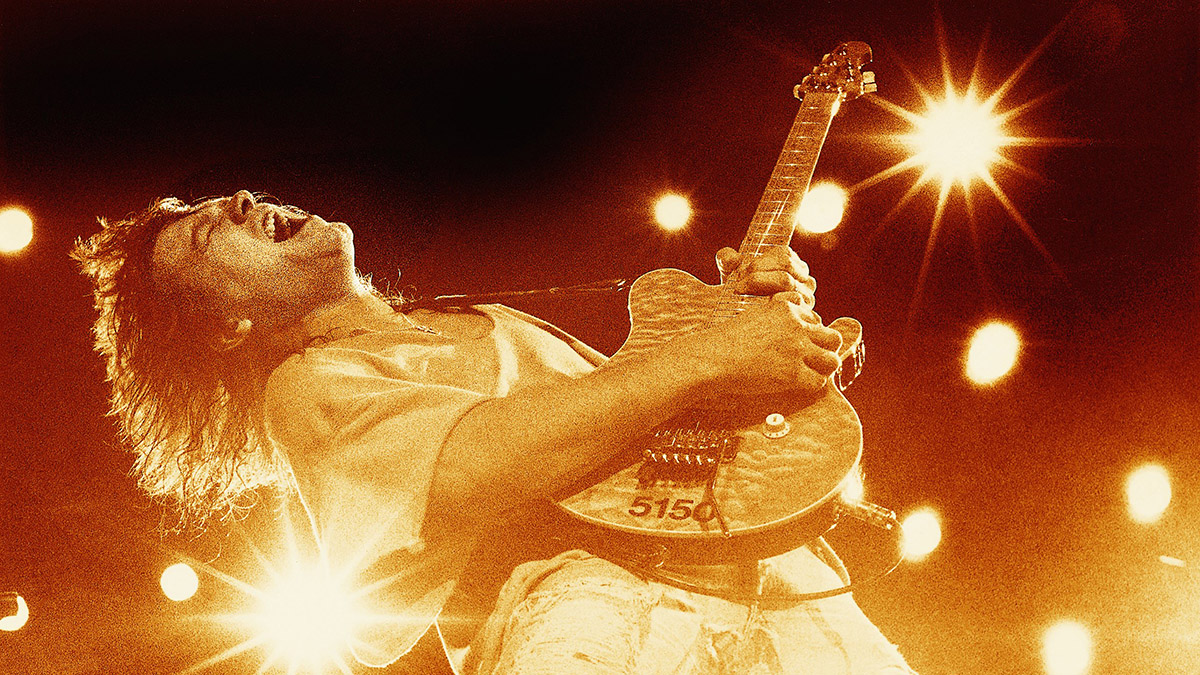
During this period the company enjoyed an impressive spike in sales, thanks to the efforts of Ernie Ball’s son Sterling, who was still a teenager. “I had worked for my dad on and off since I was 9, when I first ran the store’s cash register,” Sterling says. “I started working for the company as a road rep in 1973. My dad had this car in the factory parking lot that no one was using.
“One day I told the sales manager that I wanted to be a sales rep in Southern California, but he said he didn’t need it. I offered to do it for 10 percent of the increase in sales. I took off in that car and visited every dealer I could find. By the end of the year I had set a new sales record for the business.”
Somehow, Sterling found free time to play bass in various bands, and he also moonlighted for Leo Fender’s first post-Fender venture, Music Man. “I did beta testing for Leo, although we called it ‘bandstanding’ back then,” he says. “Leo and Tommy Walker, who was a good friend of my dad and my godfather, had developed a prototype of the StingRay bass, and I’d play it at live gigs and show it to bass players to find out what they thought of it. Leo wasn’t a musician, so I brought the player’s perspective to the StingRay’s design.”
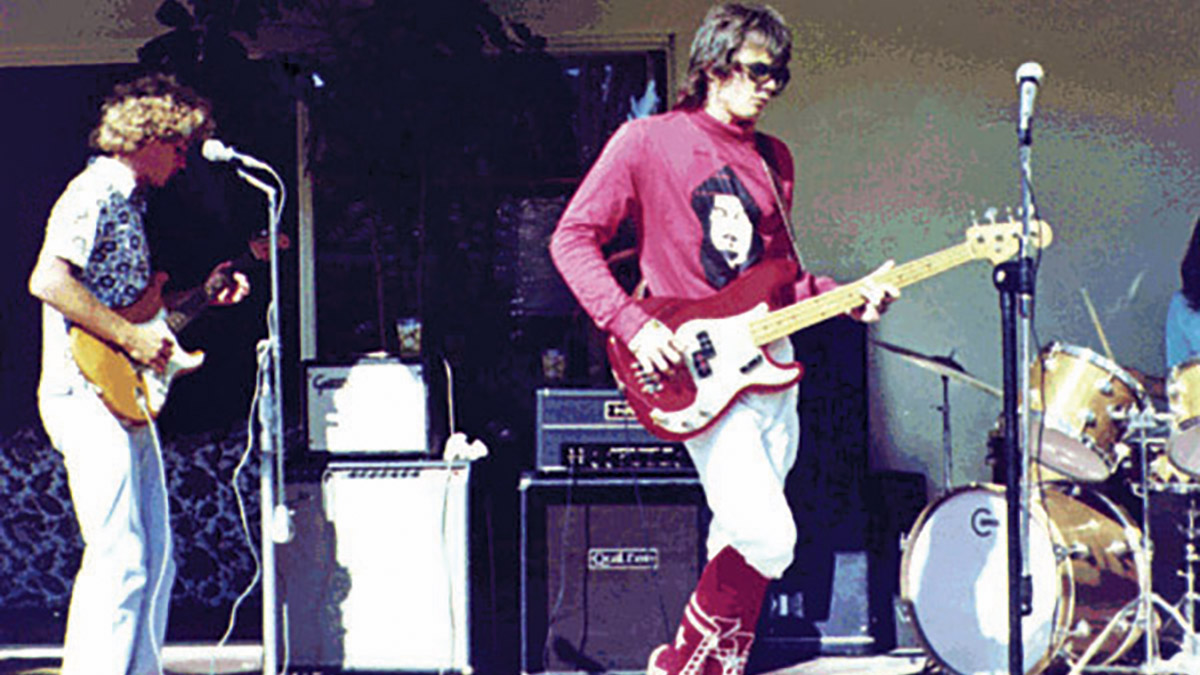
This collaboration would eventually lead to a major game-changing development for Ernie Ball during the next decade. Ernie Ball handed over the full-time responsibility of running the company to Sterling in 1975, and its sales and success continued to grow at a rapid pace.
Soon the company outgrew the production capabilities of its facilities in Newport Beach. In 1979, Ernie Ball relocated to San Luis Obispo about 200 miles up the coast in central California, where its main headquarters are still located today.
I realized the company was probably going to end up in the hands of their Japanese distributor, so I went to my dad and suggested we buy the company
Sterling Ball
In 1984, an event took place that was as important in Ernie Ball’s history as the introduction of Slinky strings in the early ’60s – the company purchased Music Man.
“Music Man was going under,” Sterling says. “Leo had left a few years before to start G&L, and the partners were fighting with each other. I realized the company was probably going to end up in the hands of their Japanese distributor, so I went to my dad and suggested we buy the company.
“It wasn’t a very significant purchase – just some inventory, a warehouse and the small amount we paid for the trademarks. It was really more of an emotional decision than a business deal. When the deal closed, I realized we just bought a guitar company but we didn’t have a factory. I needed to figure things out fast.
“I never once thought I was picking up where Leo left off,” he continues. “It was all about a reverence for the guitar and trying to move it forward. The StingRay bass was our first instrument, because that was the only Music Man product that musicians still accepted at that time.”
Every great guitar company needs a great guitar designer, and Sterling found exactly that when he hired Dudley Gimpel. The two first met in 1981 while Gimpel was working in the service department at Knut Koupee Music in Minneapolis and Sterling ordered custom Telecasters for himself and his dad.
Gimpel soon moved to California to work for Valley Arts Guitar, and when he heard that Ernie Ball had bought Music Man, he asked Sterling to hire him. Sterling refused to steal an employee from an Ernie Ball dealer, so Gimpel quit before asking Sterling again. Gimpel, along with Sterling and Dan Norton, immediately went to work building and equipping the Music Man factory.
The first Ernie Ball/Music Man StingRay bass hit the market in 1985, followed shortly afterwards by the Sabre bass.
Two years later in 1987, Music Man officially introduced its first guitar model, the Silhouette, featuring numerous innovations and enhanced features like a truss rod wheel that adjusts without needing a special tool, a compact headstock with a 4x2 tuner configuration and Molex connectors that allowed guitarists to quickly and easily change pickup configurations by swapping out pickguard assemblies.
“People laughed at the Silhouette at first,” Sterling says. “Then Keith Richards started playing it and they called me a genius.” Richards not only played the Silhouette; he famously said in a Guitar Player magazine interview that it “has the opportunity to become like the Stratocaster or Telecaster or Les Paul, one of the classic electric guitars.”

Around the same time, Music Man also introduced its first artist signature guitar, the Steve Morse model. An eye-catching solidbody featuring a modernistic compact angular design called the Axis was often seen in the hands of Albert Lee during this time as well, although that guitar wasn’t officially released until 1993 as the Albert Lee model.
With players like Lee, Morse and Richards enthusiastically supporting the brand, interest in Music Man guitars began to grow. However, the next artist to join the Music Man guitar roster – Eddie Van Halen – instantly transformed the response to the company from interested raised eyebrows to dropped-jaw, eyes-wide-open amazement.
Although Van Halen famously endorsed Kramer guitars during the ’80s, Kramer never made a Van Halen signature model. The Music Man Edward Van Halen model introduced in 1991 was Van Halen’s very first official signature model, which the guitarist designed in a close collaboration with Gimpel and Sterling Ball.

Demand for the Edward Van Halen signature model was so overwhelming that the company could have easily sold tens of thousands of units every year if the factory were able to produce that many.
However, the company’s emphasis on maintaining its highest standards throughout the production process – from the selection of quality materials through the finest details of fit and finish – kept output somewhat limited, and as a result Van Halen eventually jumped ship in 1995 to Peavey, who was more willing to deliver the higher sales numbers the superstar guitarist started to demand.
We don’t have contracts with our artists. I never wanted a piece of paper to determine whether someone played our guitars or not
Sterling Ball
Although Music Man’s relationship with Van Halen was relatively short-lived, its “sterling” reputation, particularly with artists, continues to this day.
Shortly after the Van Halen model made its debut, Steve Lukather collaborated with Music Man on his first of many Luke signature models, introduced in 1993, the same year the Albert Lee model finally made its debut (with the Axis name later resurrected for the continuation of the Edward Van Halen model after Van Halen left), and both are still designing Music Man models today.
John Petrucci, who first joined Music Man’s roster in 2001, has been an especially prolific collaborator, contributing to the design of numerous JP and Majesty models (the latter co-designed by Music Man chief engineer Drew Montell) that include six-, seven- and eight-string versions.
“We don’t have contracts with our artists,” Sterling says. “I never wanted a piece of paper to determine whether someone played our guitars or not. I wanted to make sure we always earned that privilege. Most of our artists have been with us a very long time. It’s all about family.”
Ernie Ball/Music Man has remained focused on meeting artists’ needs both by working closely with well-known touring and recording musicians and supporting up-and-coming talent. In 1997 the company started sponsoring its battle of the bands on the Warped tour and has held this event on every Warped tour since then.
Post Malone and Katy Perry are just a few of the better-known examples who played on our stages when they were starting out
Sterling Ball
“When we started doing the battle of the bands, a lot of people in the industry were saying that the guitar was dead,” Sterling says. “We got 32,000 tapes that proved they were wrong about that. The contest became even bigger when my son Brian got involved with it.
“We met a lot of musicians and gave them a chance to play on the Warped tour. That’s where we first met James Valentine, whose band played there before he joined Maroon 5. Post Malone and Katy Perry are just a few of the better-known examples who played on our stages when they were starting out.”
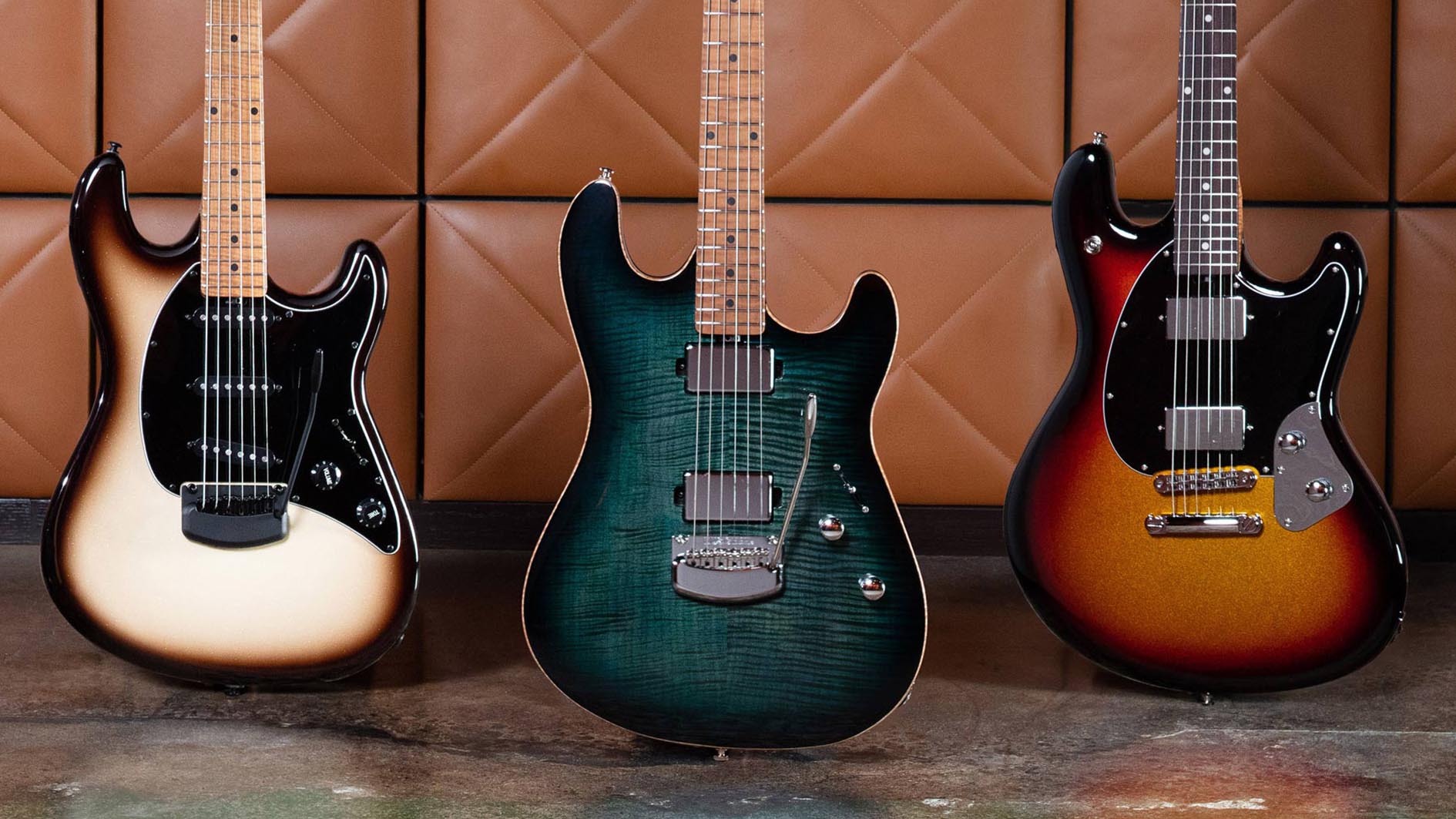
Thanks to the efforts and dedication of Sterling’s son Brian Ball, who started working for the company in 2000 and subsequently worked his way up the ranks through sales, marketing and artist relations to become CEO in 2019, Ernie Ball/Music Man has attracted new generations of players, developed remarkable new innovations and increased its sales exponentially.
Brian was particularly instrumental in the development and design of the Mariposa (Omar Rodriguez-López of Mars Volta and At the Drive-In) guitar and Tim Commerford (Rage Against the Machine) and Joe Dart (Vulfpeck) bass artist signature models.
Most recently he oversaw the creation of the Kaizen, a seven-string multi-scale guitar with vibrato tailpiece co-designed with Tosin Abasi as well as the DarkRay bass featuring built-in distortion, EQ and preamp circuits designed by Darkglass Electronics.
In addition to those instruments, Music Man currently offers signature models for a diverse and impressive group of players. Guitars include the Stephen Egerton, Dustin Kensrue, Jason Richardson, St. Vincent (Annie Clark) and Valentine (James Valentine of Maroon 5) models.
Music Man also makes signature bass models for Mike Herrera (MxPx), John Myung (Dream Theater) and Cliff Williams (AC/DC). Production models like the Axis, Cutlass, Sabre, Silhouette and StingRay guitars and Bongo, Sterling and StingRay 4- and 5-string basses remain successful perennials.
Although Sterling has handed over the reins to Brian over the years, he’s remained involved with the co-design of numerous models, such as the St. Vincent (including the most recent Goldie model), Valentine, Majesty and Short-Scale StingRay.
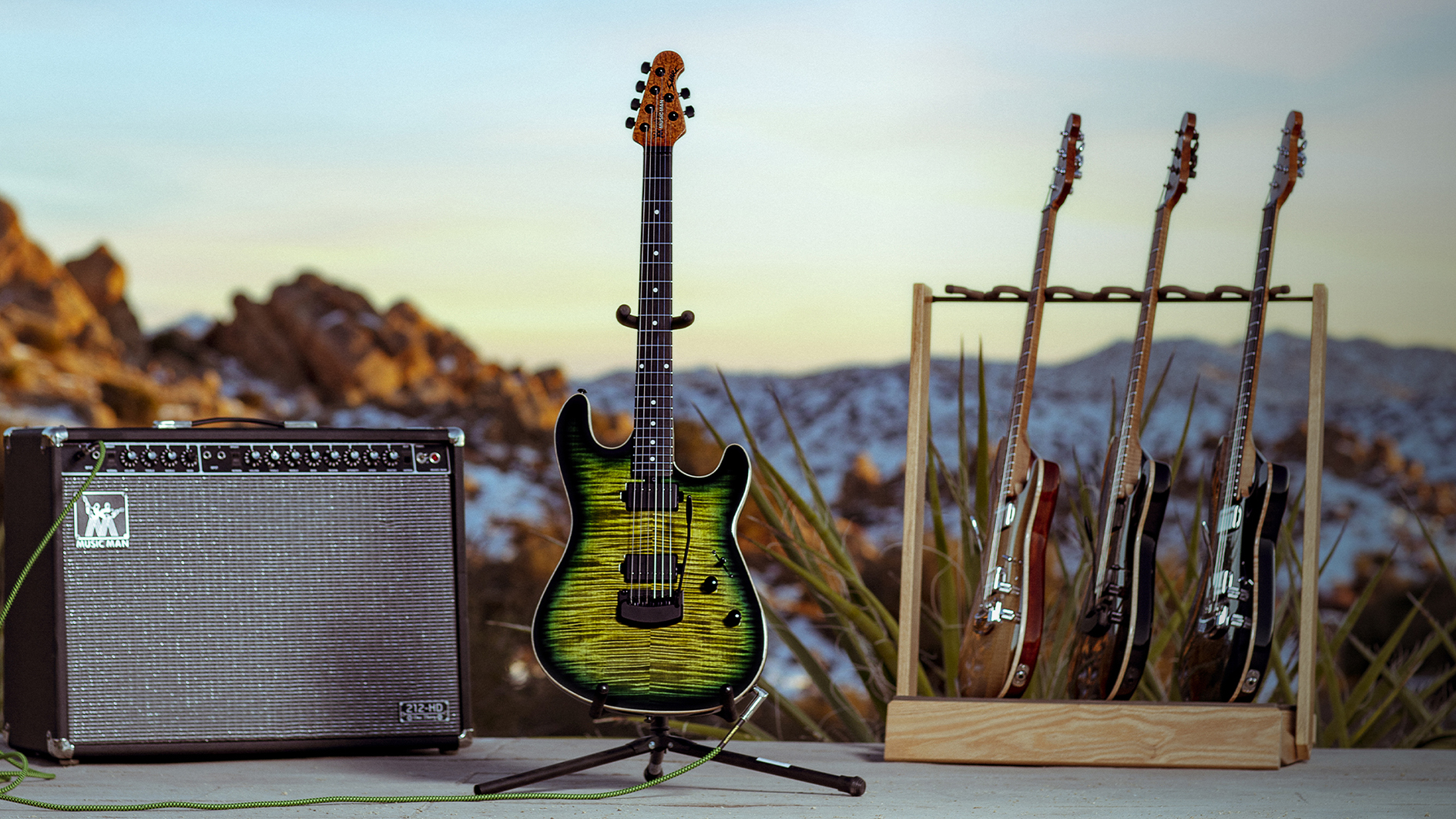
Under Brian Ball’s direction, Ernie Ball continues to be a leader in developing innovations in string technology. His contributions have included the high-output Cobalt and M-Steel electric strings, ultra-high-strength Paradigm acoustic and electric strings, revolutionary Aluminum Bronze acoustic strings and half-gauge sets featuring E strings measuring .0085, .0095 and .0105 that further expand players’ options.
Ernie Ball/Music Man remains one of the few long-lived, successful, true family businesses not only in the music industry but in the entire U.S. In addition to Brian, Sterling’s son Scott is the company’s vice president and oversees factory operations.
“When most family businesses pass from one generation to the next, its chances of success and growth usually decline with each new generation,” Sterling says. “With us it’s been the opposite. The growth of this company under Brian has been phenomenal and has exceeded everyone’s expectations. He has more than doubled our business since he took the wheel, and he’s been the straw that stirs the drink.
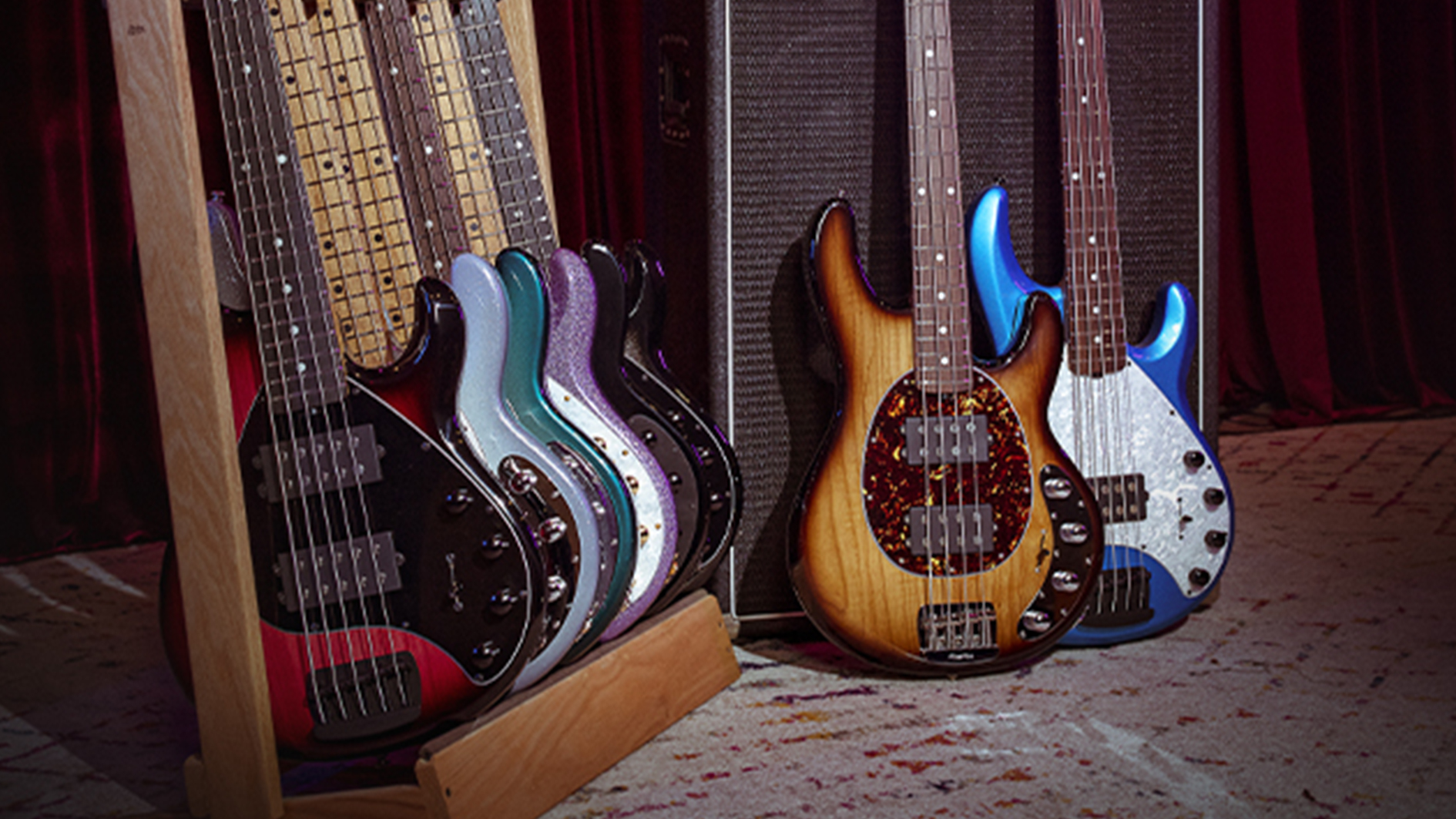
“We’re very proud of our heritage, and rightfully so, but it’s not a pillow we sleep on,” Sterling concludes. “We get up every day to support the products we make and to support our artists. We’re also focused on feeding the families of our workers. Our primary goal is creating new tools for artists.
“Growth is a secondary goal. We’ve never been about growth for the sake of growth. We’ve grown because we’ve come up with better ideas and make products that musicians actually need or want as well as things that other companies may be overlooking. We still pay as much attention to making the best strings, picks, straps, cables and everything else as we do to making the best guitars and basses.”
Chris is the co-author of Eruption - Conversations with Eddie Van Halen. He is a 40-year music industry veteran who started at Boardwalk Entertainment (Joan Jett, Night Ranger) and Roland US before becoming a guitar journalist in 1991. He has interviewed more than 600 artists, written more than 1,400 product reviews and contributed to Jeff Beck’s Beck 01: Hot Rods and Rock & Roll and Eric Clapton’s Six String Stories.

